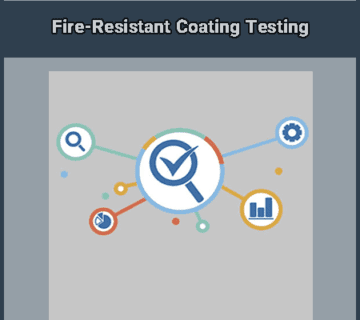Fire-resistant coatings are a crucial requirement in the construction industry, particularly for high-rise buildings in Iran. To better understand the importance of using various fire-resistant coatings, let’s consider an example. Imagine a commercial complex that was built without any fire-resistant coating. In the event of a fire, if the temperature reaches 500 degrees Celsius, the building’s columns will lose their strength and start to bend. Now, how long do you think it takes for the fire to reach this temperature? Only ten minutes… This means there are only ten minutes for the people inside the complex to evacuate, and only ten minutes for the fire department to lower the temperature below 500 degrees to prevent the columns from bending and the building from collapsing.
Now, if this structure had been built using a standard fire-resistant coating, how much would the temperature and time have changed? With a standard fire-resistant coating, the temperature could reach 1000 degrees, and the time would extend to two hours. Therefore, we conclude that using a fire-resistant coating increases the resistance of columns and the steel structure, providing more time for building evacuation and firefighting efforts.
The use of fire-resistant coatings is critically important in structures with high-traffic areas, such as commercial centers, shopping malls, hospitals, and other facilities with frequent foot traffic. In addition to fire-resistant coatings, the use of other fire detection and suppression systems is also crucial for alerting occupants, issuing evacuation warnings, and extinguishing fires.
In this content, we aim to review the various fire-resistant coatings available in the Iranian market and examine the advantages and disadvantages of each.
Types of Fire-Resistant Coatings
Fire-Resistant Boards:
Fire-resistant boards are products designed to withstand fire, made from special materials. These products are manufactured in various thicknesses and can be quickly installed in their designated locations, making them an excellent choice when speed is a priority. However, one of the challenges of using these boards is securing them to the insulated area, as they are pre-fabricated and may not fully conform to the environment. These boards can be used in internal and external walls, ceilings, columns, and partitions.
Fire-Resistant Paint:
These coatings, despite their thin application layer of just a few microns, expand significantly during a fire, forming a porous layer that provides substantial protection to the painted surfaces. Fire-resistant paint is typically applied with a thickness of up to 5 millimeters and can protect a structure from fire for up to 2 hours. One of the key advantages of this product is the aesthetic finish it provides, while a notable drawback is its higher cost compared to other products on the market.
This type of coating comes in two main types: gypsum-based and cement-based. By adding specific materials and additives, these coatings acquire fire-resistant properties. They can be applied in thicknesses ranging from 15 to 30 millimeters. A major advantage of these coatings is their cost-effectiveness, while a downside is the presence of asbestos, due to the use of vermiculite in some products.
Protherm Light fire-resistant coating is the only domestically produced cement-based fire-resistant coating that is asbestos-free. It can effectively protect a structure for up to 2 hours at temperatures up to 1200 degrees Celsius.




No comments